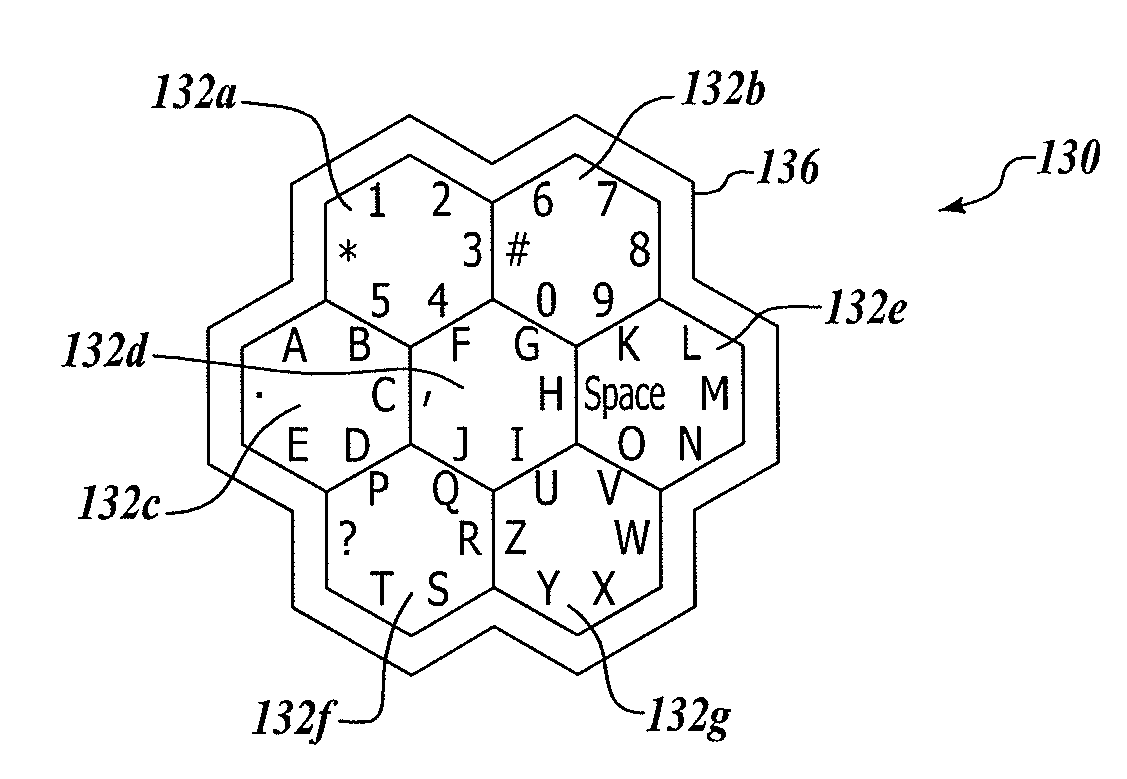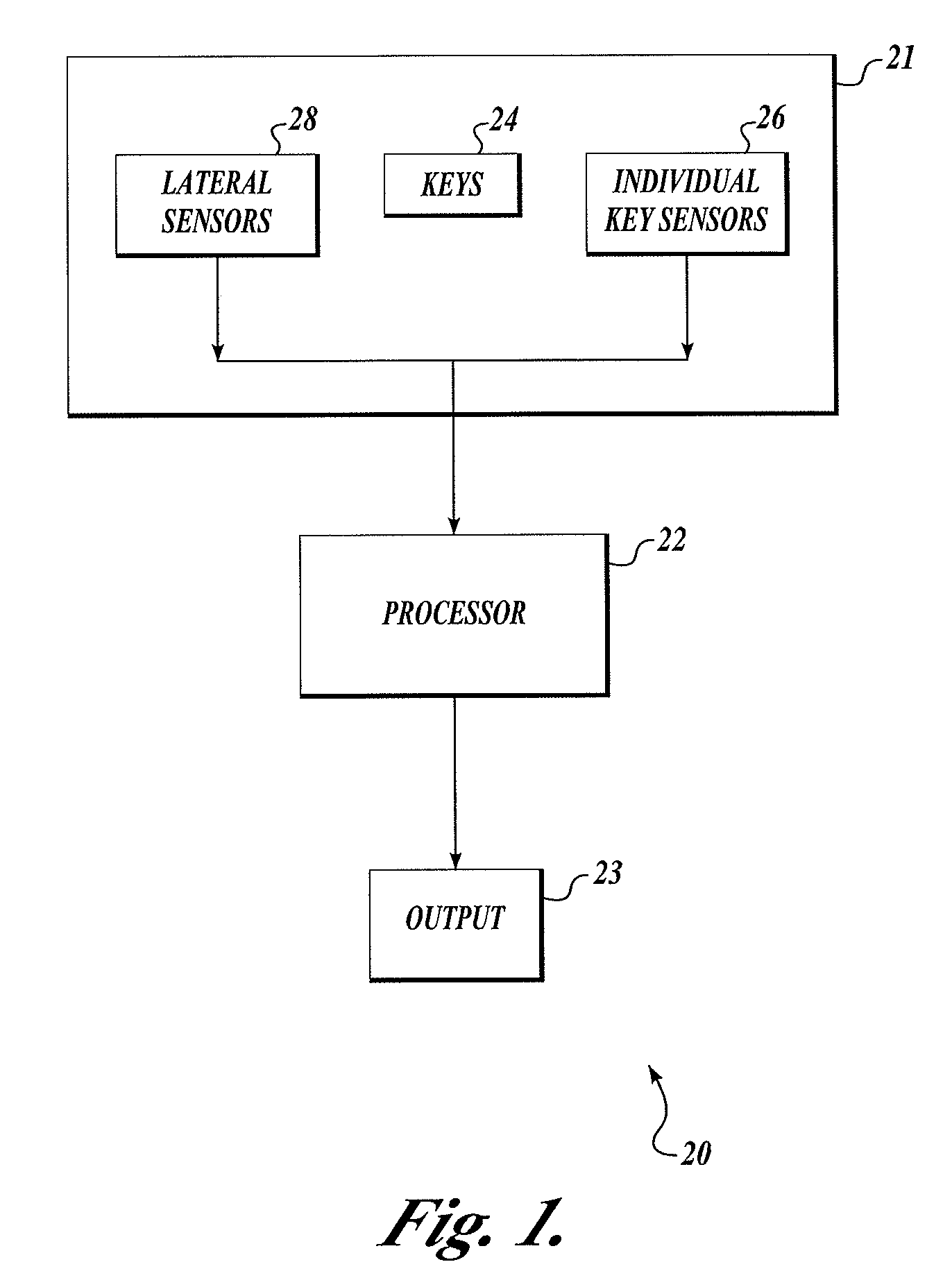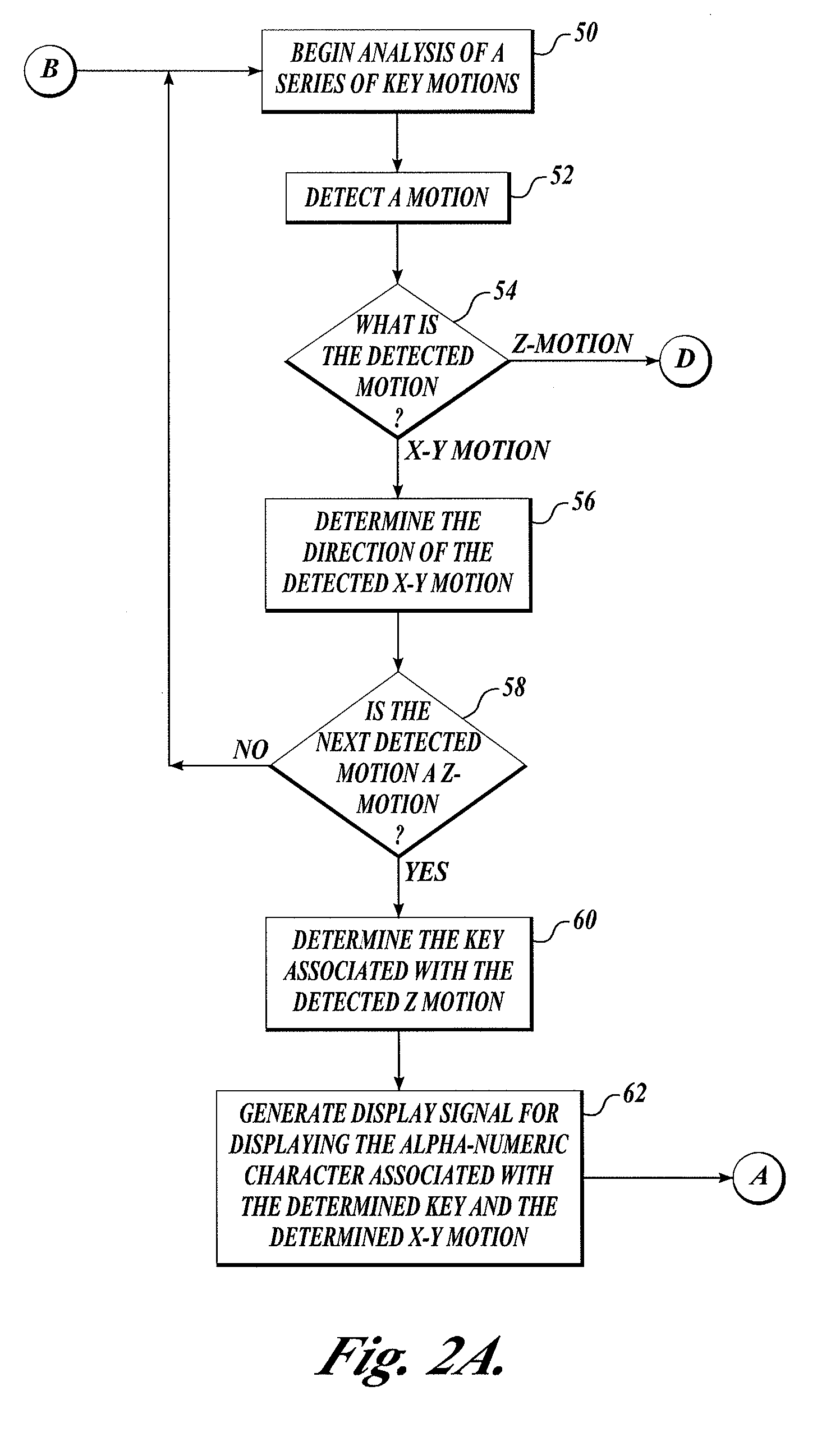Keyboard
a keyboard and keyboard technology, applied in the field of keys, can solve the problems of more difficult memorizing and remembering, and achieve the effect of facilitating memorizing
- Summary
- Abstract
- Description
- Claims
- Application Information
AI Technical Summary
Benefits of technology
Problems solved by technology
Method used
Image
Examples
Embodiment Construction
[0022]FIG. 1 illustrates components of a keyboard system 20 formed in accordance with the present invention. The keyboard system 20 includes a keyboard 21 connected to a processor 22. The processor 22 is connected to an output 23. The output 23 is preferably a display device. The keyboard 21 includes a plurality of keys 24, individual key sensors 26 and a set of lateral sensors 28. When a user depresses a key, the individual key sensors 26 generate a key select signal that indicates which key has been selected. When the keys 24 are moved laterally, the lateral sensors 28 generate a lateral signal that indicates the direction of motion. The generated signals are sent to the processor 22 for analysis. The processor 22 generates an output signal for directing operation of the output 23 based upon the analysis.
[0023]FIGS. 2A-2C illustrate a process performed by the keyboard system shown in FIG. 1. First, at block 50, detection of one or more of key motions begins. At block 52, a first k...
PUM
 Login to View More
Login to View More Abstract
Description
Claims
Application Information
 Login to View More
Login to View More - R&D
- Intellectual Property
- Life Sciences
- Materials
- Tech Scout
- Unparalleled Data Quality
- Higher Quality Content
- 60% Fewer Hallucinations
Browse by: Latest US Patents, China's latest patents, Technical Efficacy Thesaurus, Application Domain, Technology Topic, Popular Technical Reports.
© 2025 PatSnap. All rights reserved.Legal|Privacy policy|Modern Slavery Act Transparency Statement|Sitemap|About US| Contact US: help@patsnap.com



